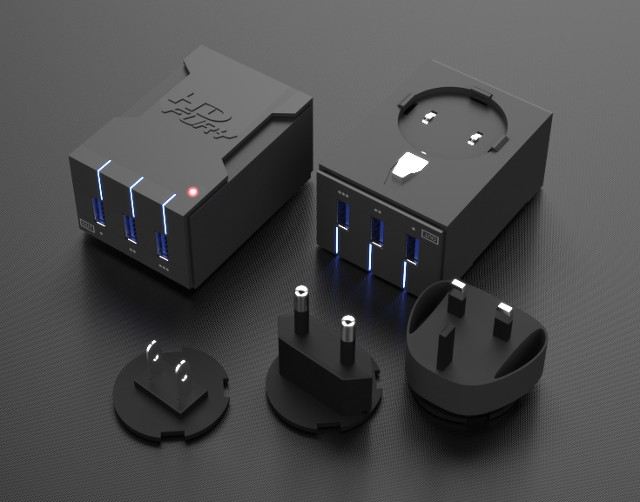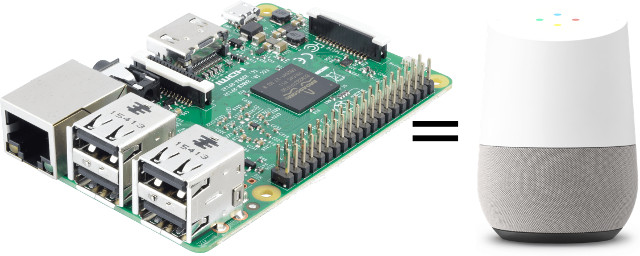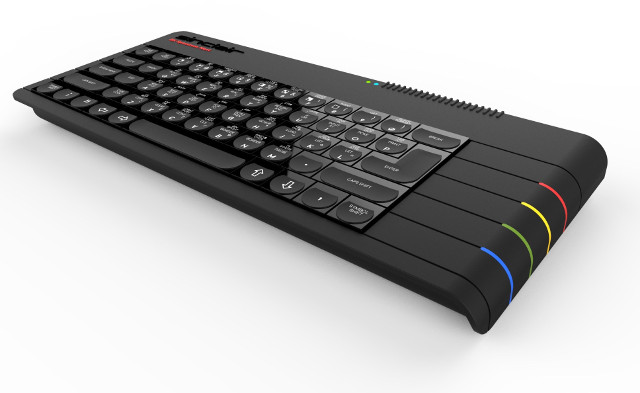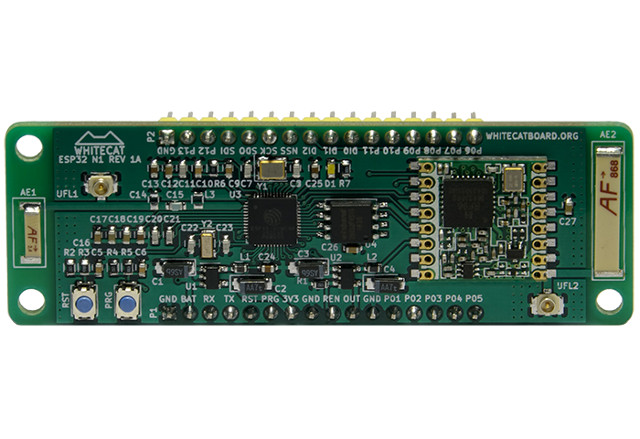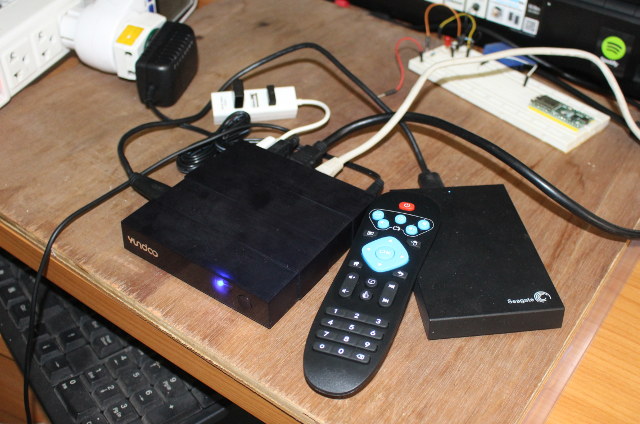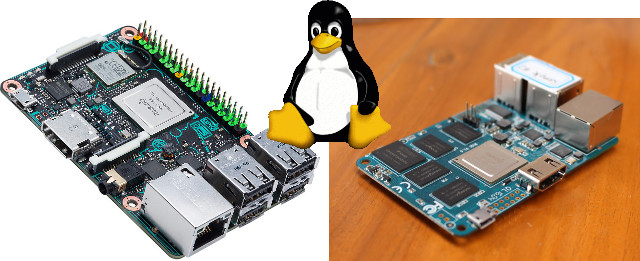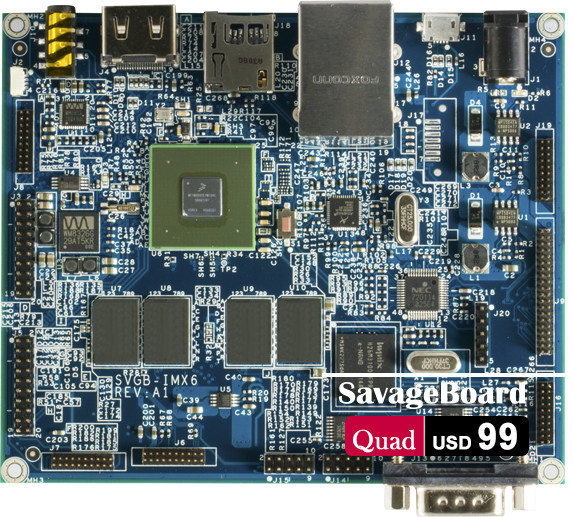We’ve recently covered Cambrionix PowerPad 15S, a high-end 16-port USB hub that can deliver 5V/2.1A on each port, integrates power monitoring function, and an API to control and monitor each port individually. That’s a very cool device, but it’s also expensive at around $600, and even the cheaper PowerPad 15C without data pins, come at $200. If you don’t need the complete set of features offered by Cambrionix devices, but you’ll like to get a reliable multi-port USB charger with power monitoring function, HDFury Universal PSU Doctor could be an interesting option. HDFury Universal PSU Doctor specifications: MCU – Renesas RL78 16-bit MCU USB – 3x USB ports with 2x 5V ports up to 5V/2.14A, 1x USB QC 2.0 port supporting 5V/2.14A, 9V/1.6A or 12V/1.2A output ADC – Up to 11 channels, 10-bit resolution for power monitoring Sensor – n-chip temperature sensor Power Supply Built-in 100 ~ 240V AC with […]
Google Assistant SDK Turns Your Raspberry Pi 3 into Google Home
Google Home allows you to select music, control your home automation system and more with voice commands, but now you can do the same with a Raspberry Pi 3 as Google released a developer preview (alpha v1) of the Google Assistant API that works on Raspberry Pi 3, and other development boards running Debian or Ubuntu. Functionalities are limited right now, with RPC API and Python sample code, but it only works with English language, and features such as timers & alarm, playing music, news, or podcasts, and precise location are not supported. Location is determined using your IP address only, and if you’re using some third party services / products such as Uber or Hue, you’ll need an actual Google Home device for initial setup. Google has provided instructions to use Google Assistant SDK with Raspberry Pi 3 board. First you’ll need a USB microphone ($5.99 on Amazon), and […]
ZX Spectrum Next Retro Keyboard PC Relies on Xilinx FPGA, Raspberry Pi Zero “Accelerator” Board (Crowdfunding)
ZX Spectrum keyboard computer was launched in April 1982 in the United Kingdom, and 35 years later, a team of developers has now been working on ZX Spectrum Next somewhat resuscitating ZX Spectrum by emulating Z80 processor in a Xilinx FPGA, using an optional Raspberry Pi Zero board as an accelerator, and adding some modern features like HDMI output and WiFi. While the case is only a 3D rendering for now, they have a working board prototype with the following specifications: FPGA – Xilinx Spartan-6 FGPA emulating Z80 processor in 3.5Mhz and 7Mhz modes System Memory – 512KB RAM (expandable to 1.5MB internally and 2.5MB externally) Storage – SD Card slot, with DivMMC compatible protocol used in the original ZX Spectrum Video Hardware sprites, 256 colours mode, Timex 8×1 mode etc. Output: RGB, VGA, HDMI Audio – 3x AY-3-8912 audio chips with stereo output + FM sound Networking – Optional […]
Whitecat ESP32 N1 Board Combines ESP32 WiFi + Bluetooth SoC with a LoRa Transceiver, Runs Lua RTOS
Espressif ESP32 SoC is gaining traction right now as prices have come down, and there’s still an on-going fight among LPWAN standards with LoRaWAN being fairly popular in Europe. Whitecat, a group of engineers from several companies based in Citilab, Barcelona, Spain, has designed a board that combines both ESP32 and a LoRA transceiver, bringing an alternative to Pycom LoPy board, but instead of running MicroPython, they have developed Lua-RTOS. Whitecat ESP32 N1 hardware specifications: SoC – Espressif ESP32 dual-core Tensilica LX6 microprocessor @ up to 240MHz with 520kB internal SRAM Storage – 4MB flash memory Connectivity LoRa WAN transceiver working in the 868 (EU) MHz / 915 (USA) MHz with on-board antenna, and u.FL connector for external antenna Integrated 802.11b/g/n WiFi transceiver with on-board antenna, and u.FL connector for external antenna Integrated dual-mode Bluetooth (classic and BLE) I/O Headers – 2x 16-pin with SPI, I2C, I2S, SDIO, UART, CAN, […]
Yundoo Y8 Rockchip RK3399 mini PC Review – Part 2: Android Firmware, Audio & Video Playback in Kodi
Yundoo Y8 is one of the first Android TV boxes / mini PCs powered by Rockchip RK3399 hexa-core processor to be launched. GearBest sent me a review sample, and since I’ve already taken it apart in the first part of the review, I’ll report my experience with the firmware in terms of stability and performance, as well as audio & video capabilities with TVMC (Kodi fork), and more. First Boot, Setup, and First Impressions I’ve first connected a few peripherals Seagate USB 3.0 drive to the USB port, a USB keyboard to one of the USB 2.0 port, and a USB hub to the other one with two USB RF dongles for MINIX NEO A2 Lite air mouse, and Tronsmart Mars G01 gamepad. After adding Ethernet and HDMI cable, I pressed the power button on the unit to start it up. Please note that the remote control cannot turn on […]
MQMaker MiQi & ASUS Tinker Boards Get Linux 4.11 with 3D Graphics Acceleration
One day after the release of Linux 4.11, developer “Miouyouyou” has released Linux 4.11 for Rockchip RK3288 platforms such as MQMaker MiQi and ASUS Tinker boards with some patchsets for ARM Mali r16p0 kernel drivers, ARM fbdev, and to improve performance. The kernel has been tested with the Mali User-space r12p0 drivers for fbdev and wayland written for Firefly-RK3288, and some OpenGL ES 3.1/3.2 samples could successfully run on the board. 3D graphics acceleration does not work in X11 however. Miouyouyou also plans to add support for Rockchip VPU code, as well as ARM gator, and document how to use ARM DS-5 Streamline for OpenGL ES 2.x/3.x debugging. If you have a MiQi or Tinker board running Debian, you can try the kernel by adding beta.armbian.com Debian repository to your apt source file, and installing the following packages:
|
1 |
apt install linux-image-dev-rockchip linux-headers-dev-rockchip linux-dtb-dev-miqi |
Via linux-rockchip G+ community. Jean-Luc Aufranc (CNXSoft)Jean-Luc started CNX Software in […]
SavageBoard Open Source Hardware Board Powered by NXP i.MX 6 Processor Offers Multiple Display Options
While it’s hard to keep track of all NXP i.MX6 boards and modules on the market, few can claim to be open source hardware, with the exception of OpenRex, and now SavageBoard, which I just found in Linux 4.11 release log. The board comes in three variants with Solo, Dual, and Quad versions, is equipped with 4 to 8GB flash, 512MB to 1GB RAM, HDMI, TFT LCD, MIPI DSI, and LVDS ports, Ethernet, SATA (Quad only), lots of I/O headers, and more. SavageBoard Solo/Dual/Quad specifications: SoC Solo – NXP i.MX 6Solo Cortex A9 processor @ 1.0 GHz with Vivante GC880 3D GPU Dual – NXP i.MX 6Dual dual core Cortex A9 processor @ 1.0 GHz with Vivante GC880 3D GPU Quad – NXP i.MX 6Quad quad core Cortex A9 processor @ 1.0 GHz with Vivante GC2000 3D GPU System Memory Solo – 512 MB 32-bit DDR3 @ 400 MHz Dual […]
Does That Crane or Drilling Rig Run mainline Linux?
Linux 4.11 has just been released, and as usual I looked into the changelog especially checking out work done on ARM architecture, and some newly supported SoCs or board. One line in the log caught my attention: “Liebherr (LWN) monitor 6 based on i.MX6 Quad, no idea what this is”. So I had a look, and Liebherr-Werk Nenzing GmbH is a swiss company specializing in construction machines and maritime cranes such as “crawler cranes, duty-cycle crawler cranes, as well as piling and drilling rigs”. The DTS file for LWN Monitor 6 shows an NXP i.MX 6Quad processor is used in a product with an LVDS display and various interfaces such as I2C, PWM, SPI, and so on. So it could be some kind of control panel for one or more of their equipment. After looking into some PDF documentation, we can see on page 10 that the company mentions Litronic […]


